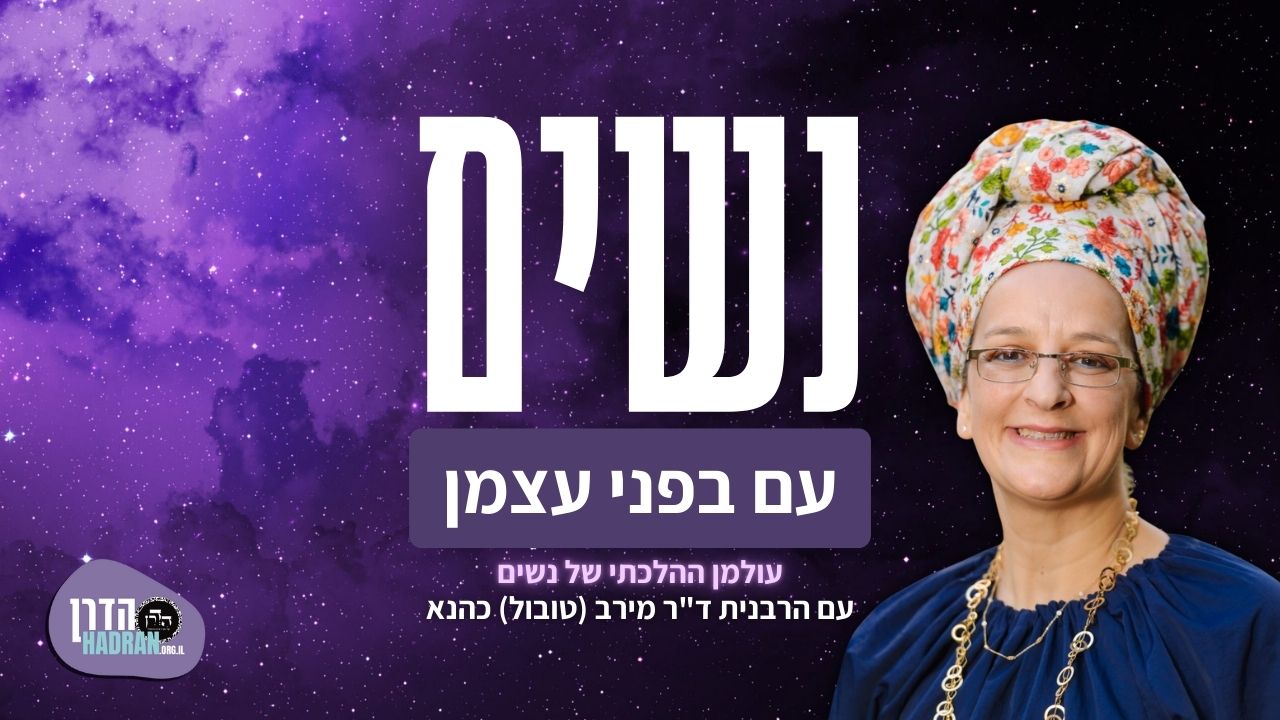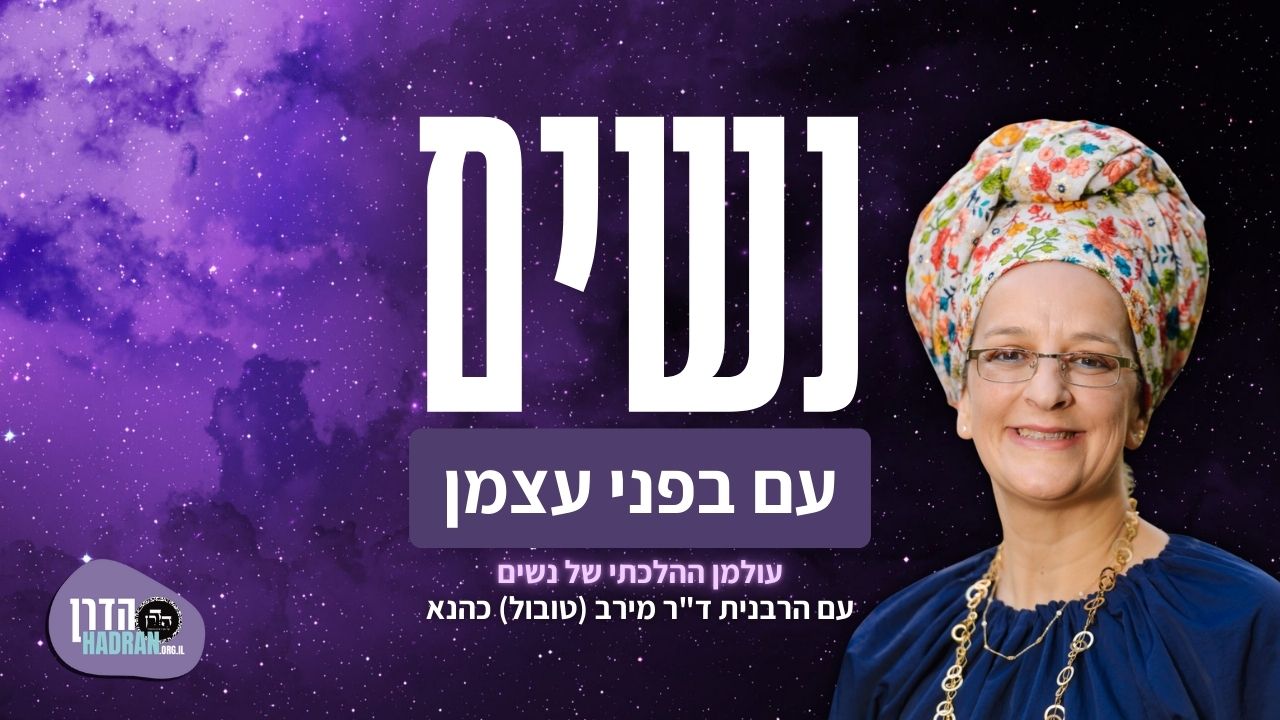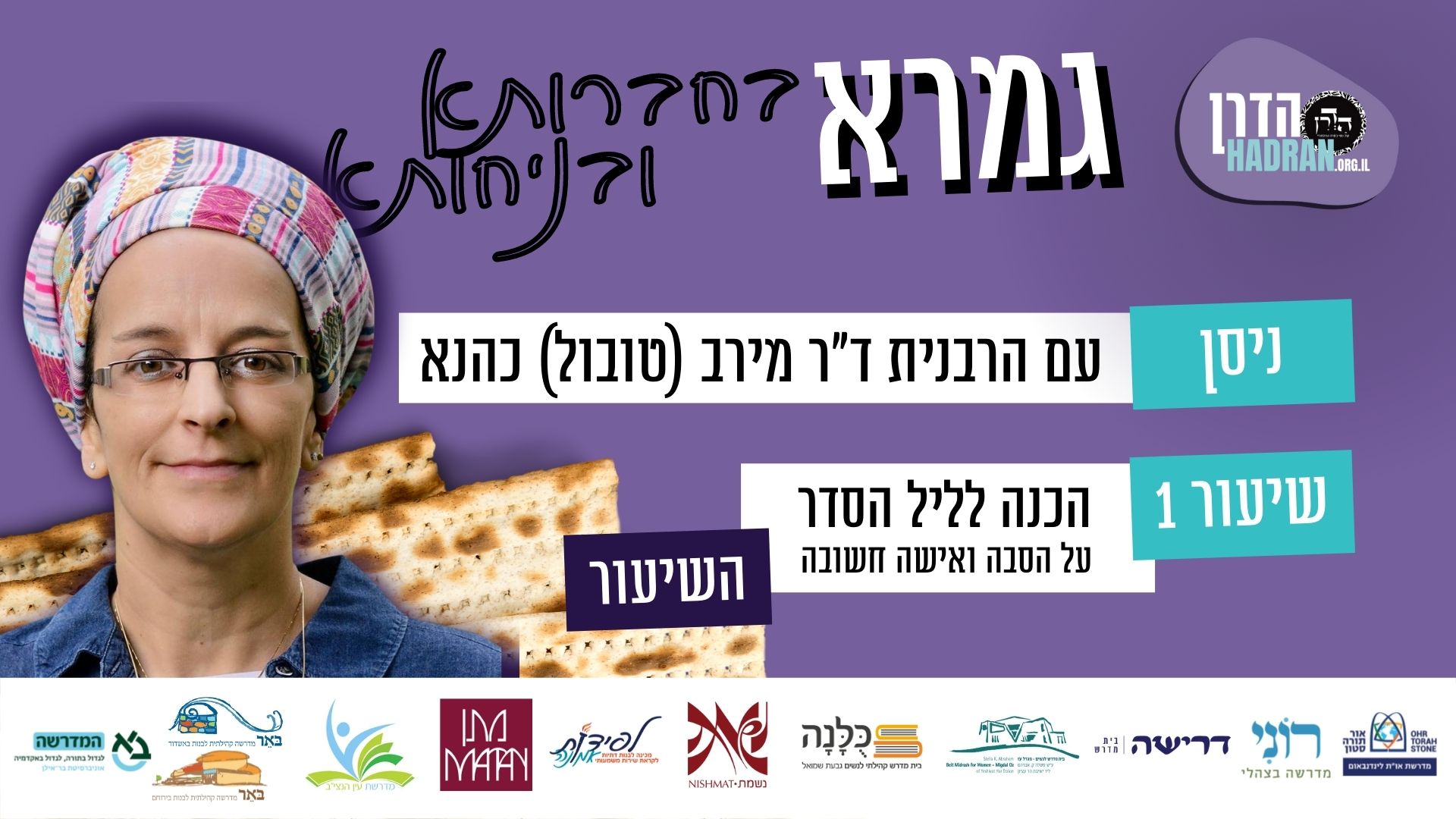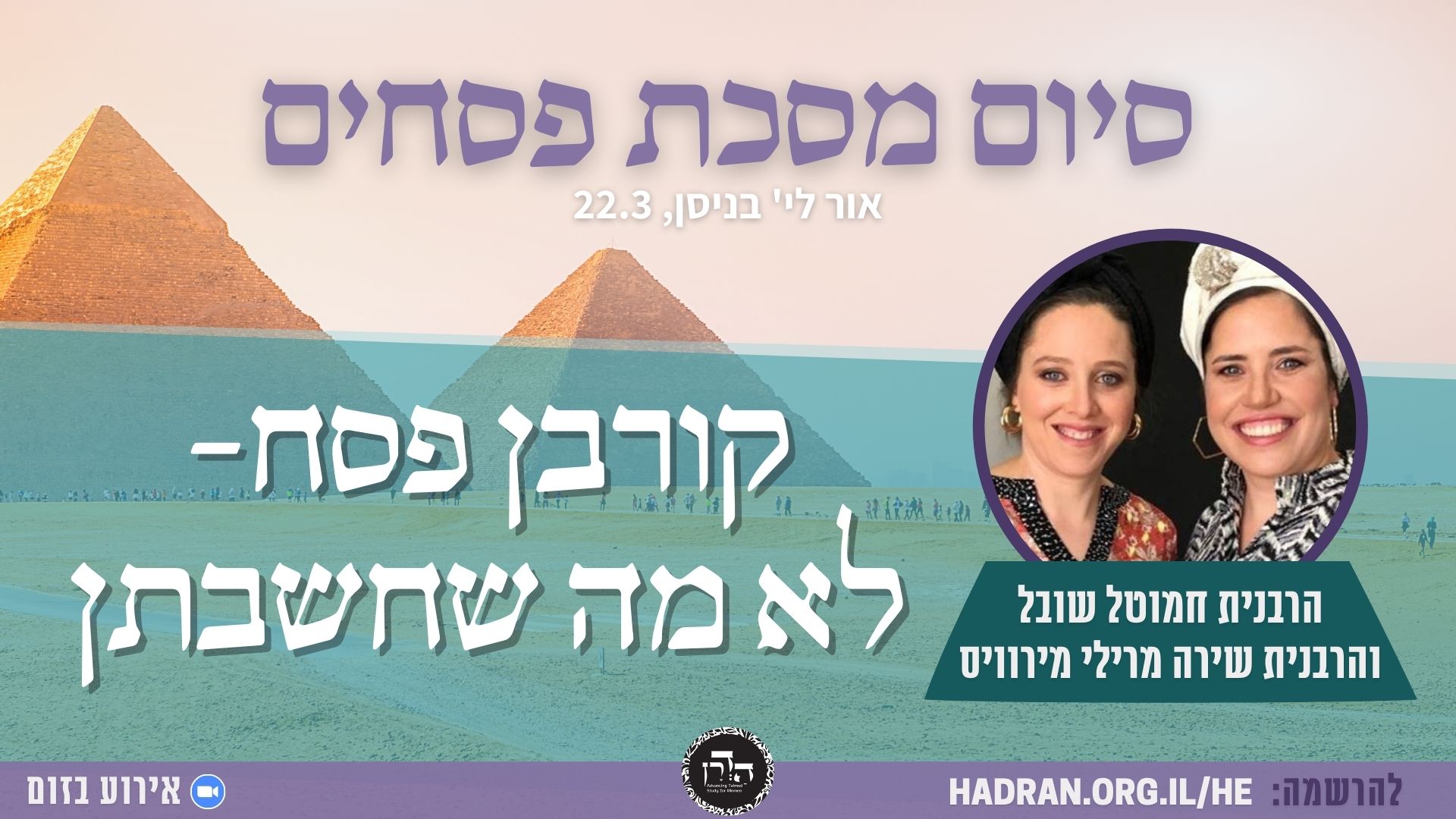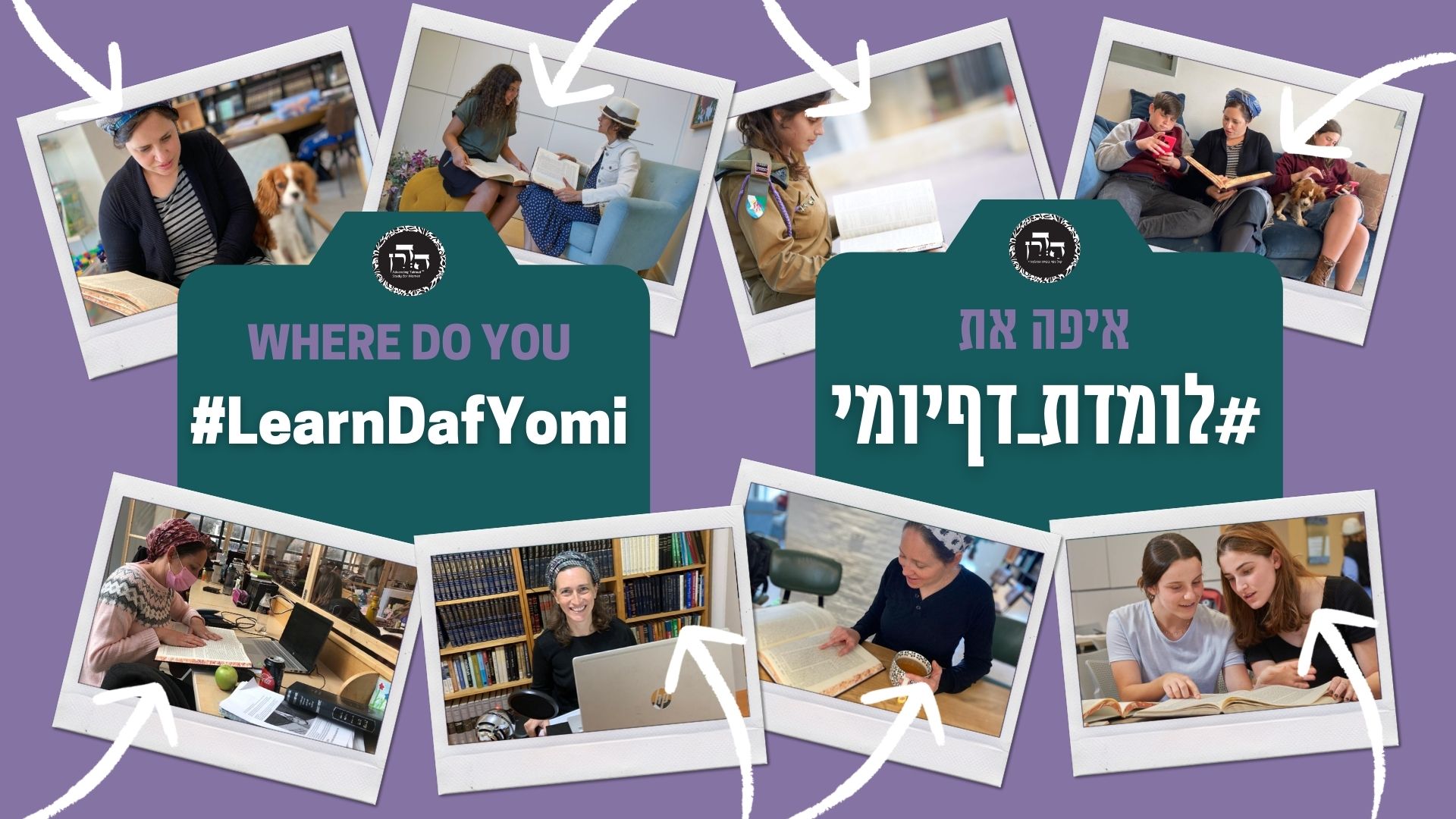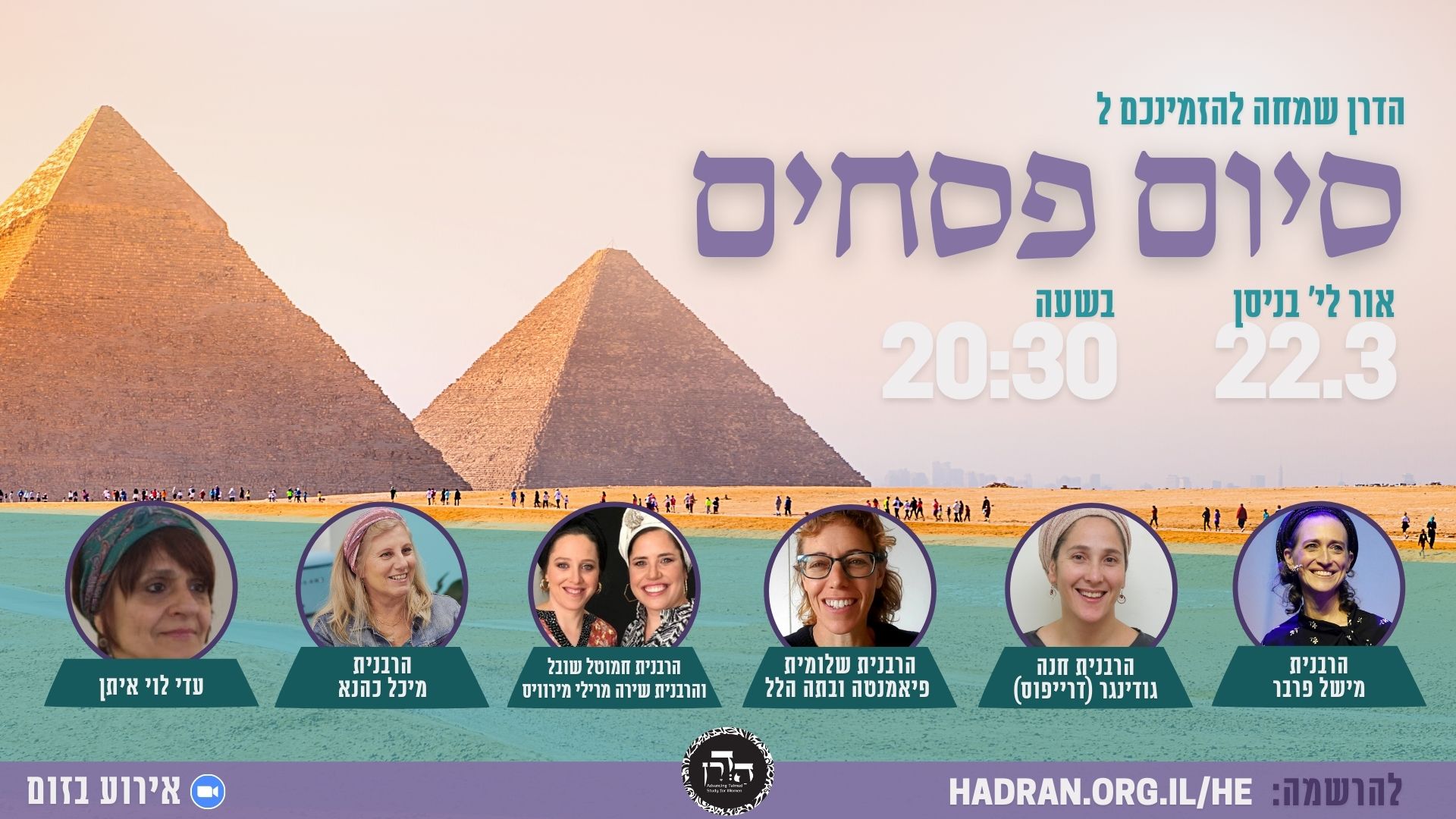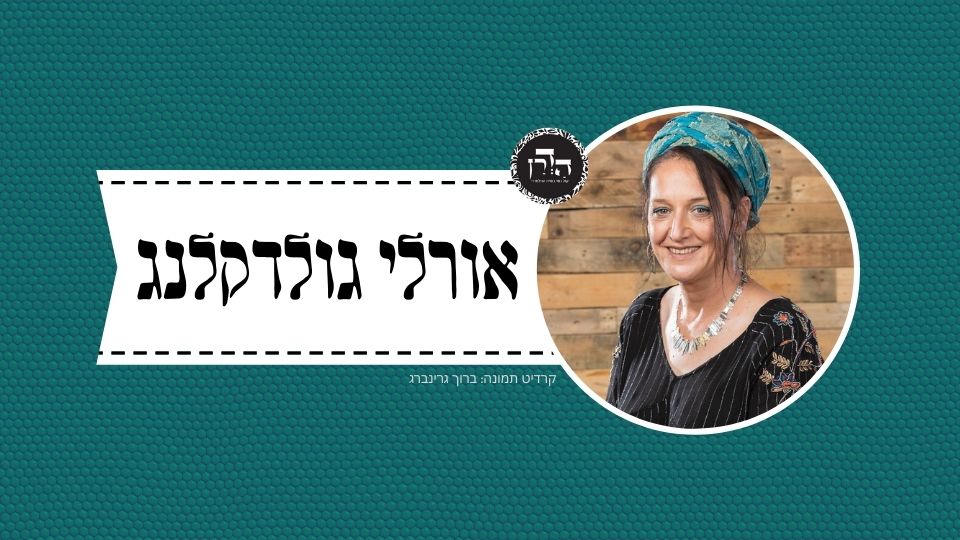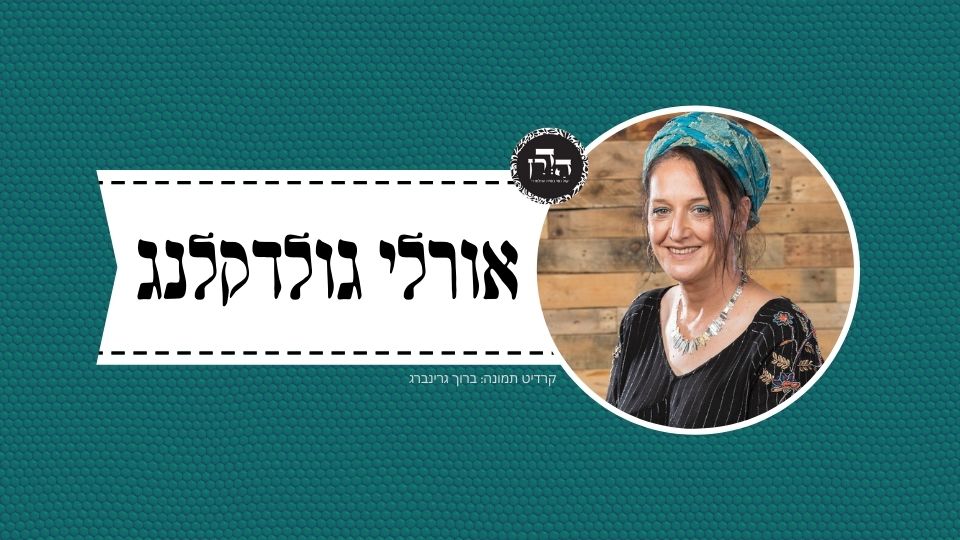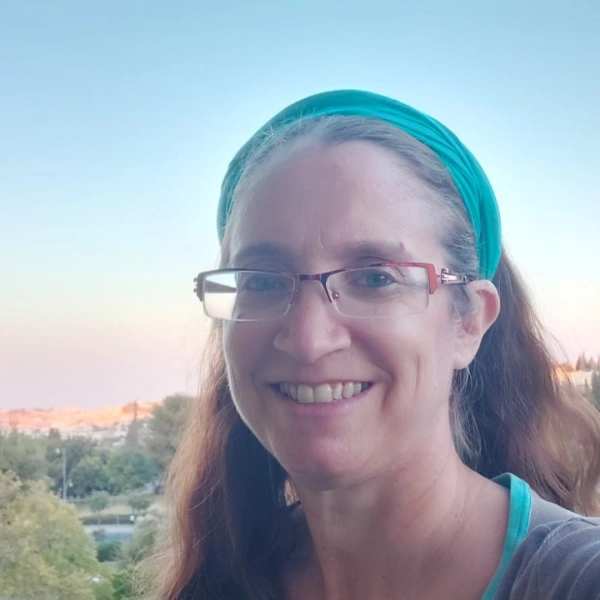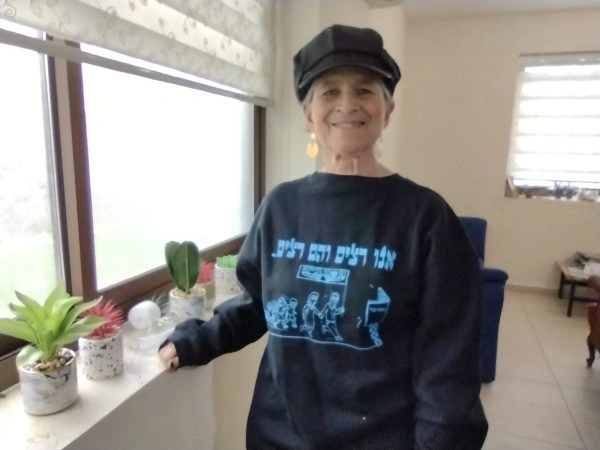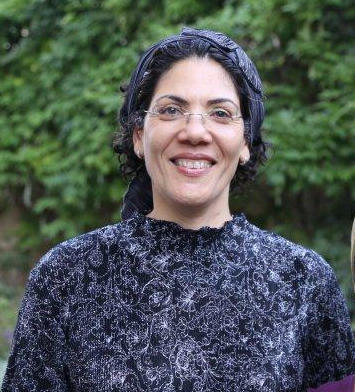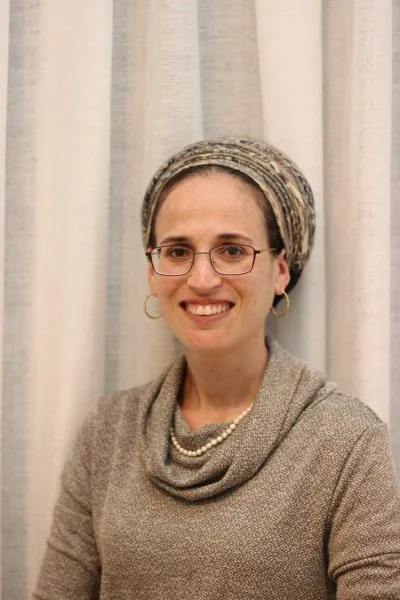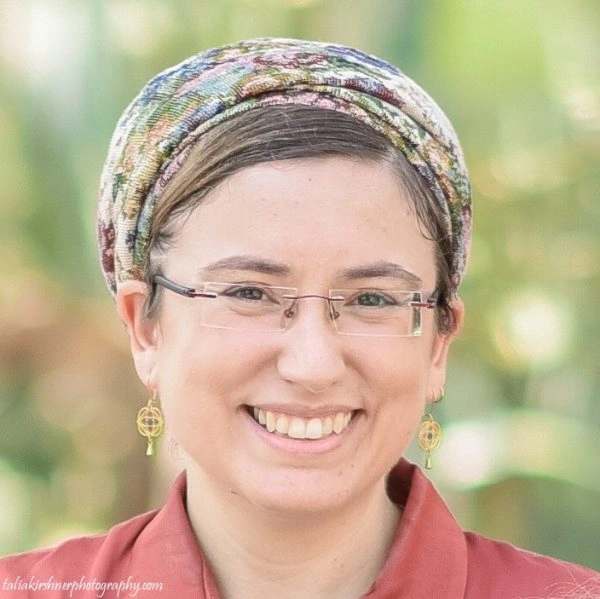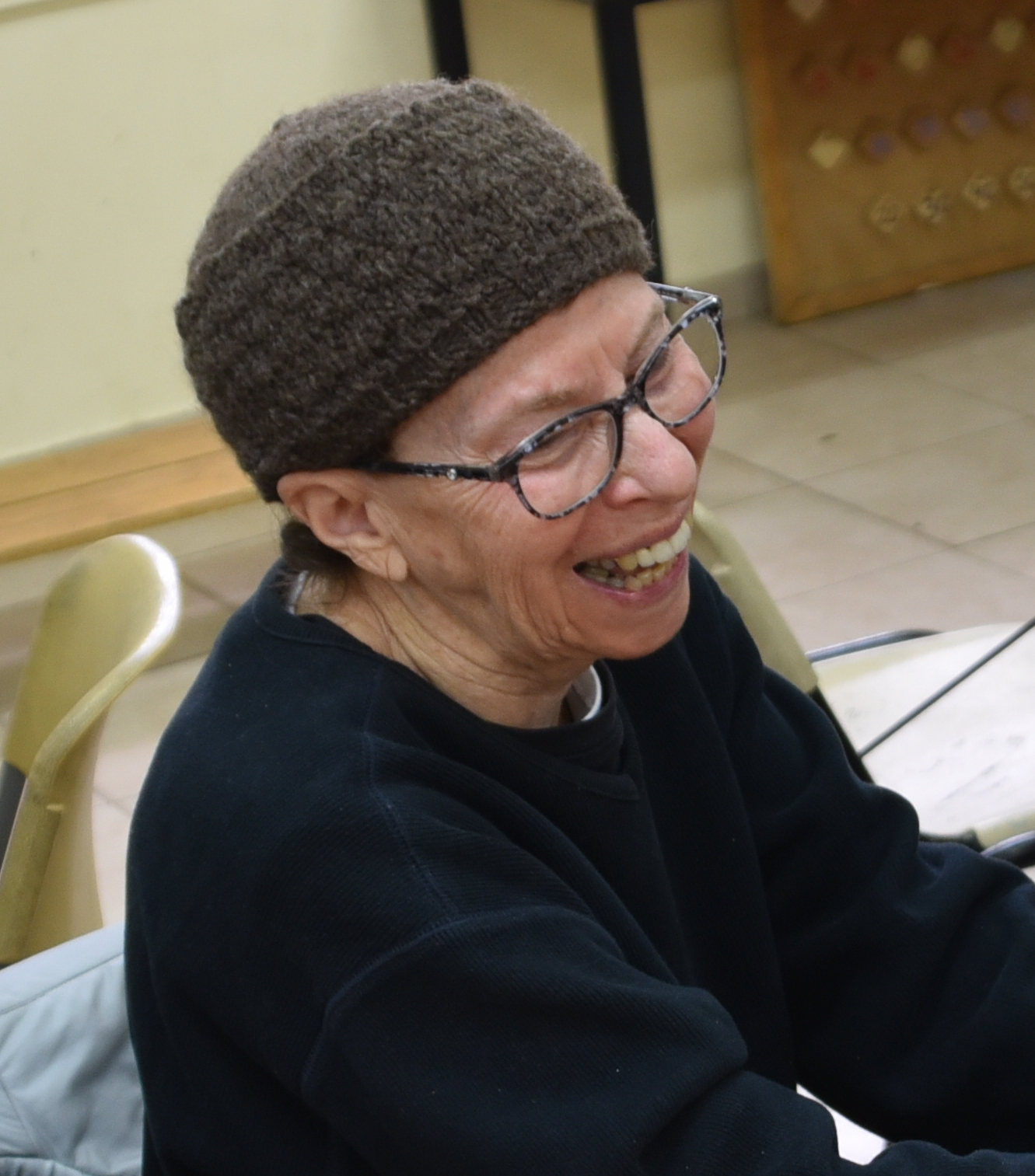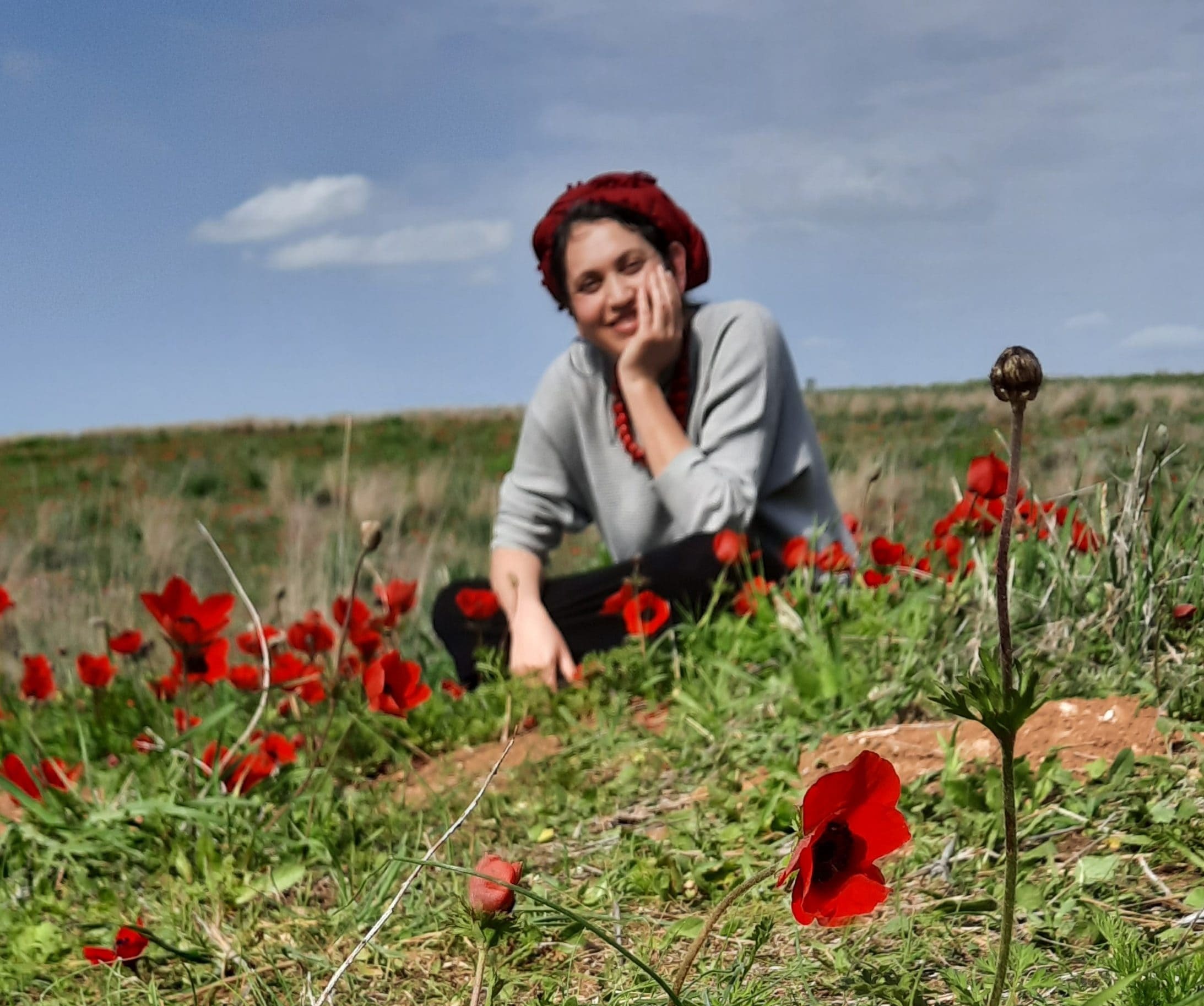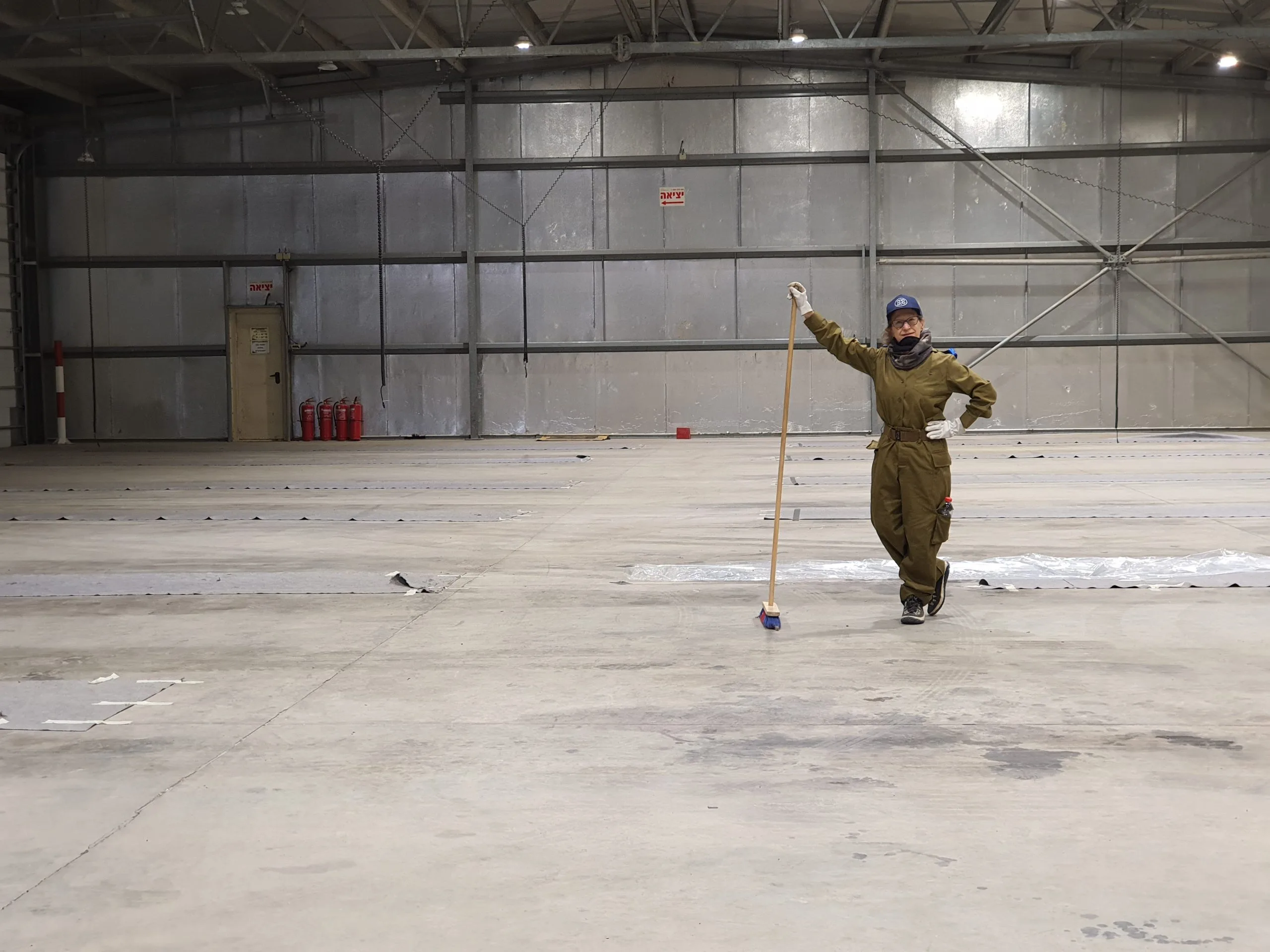צריך להימנות על קרבן פסח לאכילת כזית מינימום של הבשר. איזה חלקים נחשבים כבשר לעניין הזה? מה ההלכה לגבי גידים שסופן להקשות? מקבלים מלקות אם שוברים עצם על בשר טהור אבל לא על בשר טמא. לא מקבלים מלקות על נותר. למה? הגמרא מביאה שני מקורות שונים ללמד מניין לומדים שלא חייבים על קרבן פסח שנפסל. הגמרא מביאה שמונה הצעות להבדל שיצא בין שתי השיטות (נפקא מינה). בסוף, הגמרא מביאה ברייתא שבה יש חיזוק לארבע (חמש) דעות שהוזכרו. ר’ יוחנן וריש לקיש חולקים בעניין איסור עצם לא תשברו בו במקרה שיש כזית בשר במקום אחד באבר, והוא שובר חלק באבר שאין בו כזית בשר. האם חייב או לא?
רוצה להקדיש שיעור?
כלים
העמקה
רוצה להבין מה באמת קורה מתחת לפני השטח של הסוגיה?
שיעורים, פודקאסטים והרחבות של מיטב המורות שלנו יפתחו לך עוד זוויות וכיווני חשיבה.
חדשה בלימוד הגמרא?
זה הדף הראשון שלך? איזו התרגשות עצומה! יש לנו בדיוק את התכנים והכלים שיעזרו לך לעשות את הצעדים הראשונים ללמידה בקצב וברמה שלך, כך תוכלי להרגיש בנוח גם בתוך הסוגיות המורכבות ומאתגרות.
פסיפס הלומדות שלנו
גלי את קהילת הלומדות שלנו, מגוון נשים, רקעים וסיפורים. כולן חלק מתנועה ומסע מרגש ועוצמתי.
פסחים פד
וְלֹא מִילָה שֶׁלֹּא בִּזְמַנָּהּ, הַבָּאָה מִקַּל וָחוֹמֶר.
but not a circumcision that is not at its ideal time. If, for some reason, circumcision was not performed on the eighth day after birth, its performance at a later date does not override a Festival, because the obligation to perform the circumcision is not particular to that specific day. This needed to be emphasized. Otherwise, it would have come to be derived through an a fortiori inference that circumcision does override Shabbat and Festivals, based on the fact that it overrides the laws of leprosy. Therefore, the Torah emphasized that circumcision performed later than the eighth day does not override Festivals.
רַב אָשֵׁי אָמַר: ״שַׁבָּתוֹן״ דְּיוֹם טוֹב — עֲשֵׂה הוּא, וְאֵין עֲשֵׂה דּוֹחֶה לֹא תַעֲשֶׂה וַעֲשֵׂה.
Rav Ashi said a different reason that the leftover Paschal lamb is not burned on the Festival: The obligation of solemn rest stated with regard to Festivals is a positive mitzva. Therefore, the halakhot of Festivals include both a positive mitzva to rest from performing prohibited labor and a prohibition to avoid such labor, and a positive mitzva such as burning leftover sacrificial meat does not override both a prohibition and a positive mitzva.
מַתְנִי׳ כׇּל הַנֶּאֱכָל בְּשׁוֹר הַגָּדוֹל — יֵאָכֵל בִּגְדִי הָרַךְ, וְרָאשֵׁי כְנָפַיִם וְהַסְּחוּסִים.
MISHNA: Anything that is fit to be eaten in an adult ox, whose bones have fully hardened, may be eaten in a young kid. One may register for a Paschal offering in order to eat any of these parts, and eating any such part is considered a fulfillment of the mitzva to eat the Paschal lamb. However, any part of the animal that is inedible in an adult ox is not considered meat, even if it is soft enough to be eaten in a young kid. One may not register for a Paschal offering in order to eat one of these parts, and eating it is not a fulfillment of the mitzva to eat the Paschal lamb. And the soft ends of the ribs and the cartilage are soft enough to be considered edible and may therefore be eaten from the Paschal lamb.
גְּמָ׳ רַבָּה רָמֵי, תְּנַן: כׇּל הַנֶּאֱכָל בְּשׁוֹר הַגָּדוֹל — יֵאָכֵל בִּגְדִי הָרַךְ, וְשֶׁאֵינוֹ נֶאֱכָל — לֹא. אֵימָא סֵיפָא: רָאשֵׁי כְנָפַיִם וְהַסְּחוּסִים. וְהָא הָנֵי לָא מִתְאַכְלִי בְּשׁוֹר הַגָּדוֹל!
GEMARA: Rabba raised a contradiction: We learned in the mishna that anything that is fit to be eaten in an adult ox may be eaten in a young kid, which indicates clearly that anything that is not eaten in an adult ox is not eaten even when it comes from a young kid. Say the latter clause of the mishna: The ends of the ribs and the cartilage of the young kid may be eaten. But these are not eaten in an adult ox, because they have already become as hard as bone and are no longer edible.
אֶלָּא תַּנָּאֵי הִיא, וְהָכִי קָתָנֵי: כׇּל הַנֶּאֱכָל בְּשׁוֹר הַגָּדוֹל — יֵאָכֵל בִּגְדִי הָרַךְ, וְשֶׁאֵינוֹ נֶאֱכָל — לֹא. וְיֵשׁ אוֹמְרִים: אַף רָאשֵׁי כְנָפַיִם וְהַסְּחוּסִים.
Rather, it is a dispute between tanna’im, and both opinions are mentioned in the mishna, and this is what it is teaching: Anything eaten in an adult ox may be eaten in a young kid, and anything that is not eaten in an adult ox is not eaten in a young kid. And some say that even the ends of the ribs and the cartilage are eaten from a young kid, because even these parts of an adult ox can be made edible through extensive cooking.
רָבָא אָמַר: ״מָה הֵן״ קָתָנֵי, וְהָכִי קָתָנֵי: כׇּל הַנֶּאֱכָל בְּשׁוֹר הַגָּדוֹל בְּשִׁלְקָא — יֵאָכֵל בִּגְדִי הָרַךְ בְּצָלִי. וּמָה הֵן: רָאשֵׁי כְנָפַיִם וְהַסְּחוּסִים.
Rava said: The mishna teaches employing the style: What are they, in which the mishna establishes a principle and then provides detail, and this is what it is teaching: Anything that is fit to be eaten in an adult ox through cooking may be eaten in a young kid through roasting, even if this part of an adult ox cannot be made edible through roasting. And what are these parts? They are the ends of the ribs and the cartilage.
תַּנְיָא כְּווֹתֵיהּ דְּרָבָא: כׇּל הַנֶּאֱכָל בְּשׁוֹר הַגָּדוֹל בְּשִׁלְקָא — יֵאָכֵל בִּגְדִי הָרַךְ בְּצָלִי, וּמָה הֵן: רָאשֵׁי כְנָפַיִם וְהַסְּחוּסִים, וְגִידִין הָרַכִּין נִידּוֹנִין כְּבָשָׂר.
It was taught in a baraita in accordance with the opinion of Rava: Anything that is fit to be eaten in an adult ox through cooking may be eaten in a young kid through roasting; and what are these parts? They are the ends of the ribs and the cartilage; and the soft sinews are judged as meat.
אִיתְּמַר: גִּידִין שֶׁסּוֹפָן לְהַקְשׁוֹת, רַבִּי יוֹחָנָן אָמַר: נִמְנִין עֲלֵיהֶן בַּפֶּסַח, רֵישׁ לָקִישׁ אָמַר: אֵין נִמְנִין עֲלֵיהֶן בַּפֶּסַח. רַבִּי יוֹחָנָן אָמַר נִמְנִין עֲלֵיהֶן — בָּתַר הַשְׁתָּא אָזְלִינַן. רֵישׁ לָקִישׁ אָמַר אֵין נִמְנִין עֲלֵיהֶן — בָּתַר בַּסּוֹף אָזְלִינַן.
It was stated that the Sages disputed the issue of sinews that will eventually harden but are currently soft. Rabbi Yoḥanan said: One may register for them in the Paschal lamb. Reish Lakish said: One may not register for them in the Paschal lamb. The Gemara explains: Rabbi Yoḥanan said that one may register for them in the Paschal lamb because we follow the current condition of the sinews; since they are edible in their current state, they are considered meat. Reish Lakish said that one may not register for them in the Paschal lamb because we follow the eventual condition of the sinews, and they eventually become inedible.
אֵיתִיבֵיהּ רֵישׁ לָקִישׁ לְרַבִּי יוֹחָנָן: כׇּל הַנֶּאֱכָל בְּשׁוֹר הַגָּדוֹל — יֵאָכֵל בִּגְדִי הָרַךְ, וּמָה הֵן רָאשֵׁי כְנָפַיִם וְהַסְּחוּסִים. הָנֵי אִין, אֲבָל גִּידִין שֶׁסּוֹפָן לְהַקְשׁוֹת — לָא! אֲמַר לֵיהּ: תְּנָא הָנֵי וְהוּא הַדִּין לְהָנָךְ. הָנֵי מַאי טַעְמָא — דְּהָא מִתְאַכְלִי בְּשׁוֹר הַגָּדוֹל בְּשִׁלְקָא, הָנָךְ נָמֵי מִתְאַכְלִי בְּשׁוֹר הַגָּדוֹל בְּשִׁלְקָא.
Reish Lakish raised an objection to Rabbi Yoḥanan: It was stated that anything eaten in an adult ox may be eaten in a young kid, and what are these parts? They are the ends of the ribs and the cartilage. This indicates that with regard to these items, yes, they may be eaten; but with regard to sinews that will eventually harden, no, they may not. This contradicts the opinion of Rabbi Yoḥanan. Rabbi Yoḥanan said to him: It taught these, the ends of the ribs and the cartilage, and the same is true for those, i.e., the same halakha applies to sinews that will eventually harden. What is the reason that people may register for these, the ends of the ribs and the cartilage? It is because they are eaten in an adult ox through cooking. These, too, the sinews that will eventually harden, are eaten in an adult ox through cooking.
אֲמַר לֵיהּ רַבִּי יִרְמְיָה לְרַבִּי אָבִין: כִּי אָזְלַתְּ לְקַמֵּיהּ דְּרַבִּי אֲבָהוּ, רְמִי לֵיהּ: מִי אָמַר רַבִּי יוֹחָנָן גִּידִין שֶׁסּוֹפָן לְהַקְשׁוֹת נִמְנִין עֲלֵיהֶן בַּפֶּסַח, אַלְמָא: בָּתַר הַשְׁתָּא אָזְלִינַן? וְהָא בְּעָא מִינֵּיהּ רֵישׁ לָקִישׁ מֵרַבִּי יוֹחָנָן: עוֹר הָרֹאשׁ שֶׁל עֵגֶל הָרַךְ, מַהוּ שֶׁיְּטַמֵּא? וְאָמַר לוֹ: אֵין מְטַמֵּא. אַלְמָא: בָּתַר בַּסּוֹף אָזְלִינַן!
Rabbi Yirmeya said to Rabbi Avin: When you go before Rabbi Abbahu, raise the following contradiction to him: Did Rabbi Yoḥanan actually say: With regard to sinews that will eventually harden, people may register for them in the Paschal lamb, which would apparently indicate that we go according to the current condition of the sinews? But Reish Lakish asked Rabbi Yoḥanan: With regard to the hide of the head of a young calf, which is still edible, what is the halakha with regard to the possibility of it becoming ritually impure as a food? Do we view it as a food and apply the rules of ritual impurity of foods, or do we view it as a hide? And he said to him: It does not become ritually impure. Apparently, we go according to the eventual condition of the hide, which contradicts Rabbi Yoḥanan’s own opinion with regard to sinews.
אֲמַר לֵיהּ: דִּרְמָא לָךְ הָא — לָא חַשׁ לְקִמְחֵיהּ. הָא הֲדַר בֵּיהּ רַבִּי יוֹחָנָן לְגַבֵּי דְּרֵישׁ לָקִישׁ, וַאֲמַר לֵיהּ: אַל תַּקְנִיטֵנִי, שֶׁבִּלְשׁוֹן יָחִיד אֲנִי שׁוֹנֶה אוֹתָהּ.
When Rabbi Avin came before Rabbi Abbahu and asked him this question, Rabbi Abbahu said to him: Whoever asked you this question was not concerned for his flour, meaning he did not carefully consider what he said. Rabbi Yoḥanan retracted his opinion in this regard in favor of the opinion of Reish Lakish, and Rabbi Yoḥanan said to him, at the end of their discussion on the topic: Do not trouble me by asking a question based on a mishna that seems to prove that we follow the current state of the hide, as I teach it in the singular. That mishna, on which I previously relied, is the opinion of one Sage and should not be relied upon. This proves that Rabbi Yoḥanan changed his mind and concluded that the status of parts of the animal is established based on their eventual condition. The opinion of Rabbi Yoḥanan with regard to the Paschal lamb was stated before he changed his mind.
מַתְנִי׳ הַשּׁוֹבֵר אֶת הָעֶצֶם בַּפֶּסַח הַטָּהוֹר — הֲרֵי זֶה לוֹקֶה אַרְבָּעִים. אֲבָל הַמּוֹתִיר בַּטָּהוֹר וְהַשּׁוֹבֵר בְּטָמֵא — אֵינוֹ לוֹקֶה אֶת הָאַרְבָּעִים.
MISHNA: One who breaks the bone of a Paschal lamb that is ritually pure receives forty lashes for having violated a prohibition stated in the Torah. But one who leaves over part of a ritually pure Paschal lamb and one who breaks the bone of a ritually impure Paschal lamb do not receive forty lashes.
גְּמָ׳ בִּשְׁלָמָא מוֹתִיר בַּטָּהוֹר — דְּתַנְיָא: ״לֹא תוֹתִירוּ מִמֶּנּוּ עַד בֹּקֶר וְהַנֹּתָר מִמֶּנּוּ עַד בֹּקֶר וְגוֹ׳״, בָּא הַכָּתוּב לִיתֵּן עֲשֵׂה אַחַר לֹא תַּעֲשֶׂה לוֹמַר שֶׁאֵין לוֹקֶה — דִּבְרֵי רַבִּי יְהוּדָה.
GEMARA: The Gemara analyzes the mishna’s rulings: Granted, one who leaves over part of a ritually pure Paschal lamb is not flogged for having violated Torah law. There is good reason for this, as it was taught in a baraita: The verse states: “And you shall not leave any of it until morning; and that which remains of it until morning you shall burn with fire” (Exodus 12:10). The verse comes to provide a positive mitzva to burn the leftover after the prohibition against leaving it over, to say that one is not flogged because any prohibition that can be rectified by the performance of a positive mitzva does not carry a punishment of lashes. This is the statement of Rabbi Yehuda.
רַבִּי יַעֲקֹב אוֹמֵר: לֹא מִן הַשֵּׁם הוּא זֶה, אֶלָּא מִשּׁוּם דְּהָוֵה לֵיהּ לָאו שֶׁאֵין בּוֹ מַעֲשֶׂה, וְאֵין לוֹקִין עָלָיו. אֶלָּא שׁוֹבֵר בַּטָּמֵא מְנָלַן? דְּאָמַר קְרָא: ״וְעֶצֶם לֹא תִשְׁבְּרוּ בוֹ״, ״בּוֹ״ בְּכָשֵׁר וְלֹא בְּפָסוּל.
Rabbi Ya’akov says: This is not for that reason. Rather, it is because it is a prohibition that does not involve an action. The transgression is simply the failure to consume all the meat during the allotted time rather than the performance of an action. And one is not flogged for any prohibition that does not involve an action. But with regard to one who breaks the bone of a ritually impure Paschal lamb, from where do we derive that he, too, does not receive lashes? The Gemara answers that the source is as the verse states: “In one house shall it be eaten; you shall not remove any of the meat from the house to the outside, and you shall not break a bone in it” (Exodus 12:46). It may be inferred that the prohibition applies “in it,” in a valid Paschal lamb, and not in a disqualified one.
תָּנוּ רַבָּנַן: ״וְעֶצֶם לֹא תִשְׁבְּרוּ בוֹ״, ״בּוֹ״ — בְּכָשֵׁר וְלֹא בְּפָסוּל. רַבִּי אוֹמֵר: ״בְּבַיִת אֶחָד יֵאָכֵל … וְעֶצֶם לֹא תִשְׁבְּרוּ בּוֹ״. כׇּל הָרָאוּי לַאֲכִילָה — יֵשׁ בּוֹ מִשּׁוּם שְׁבִירַת עֶצֶם, וְשֶׁאֵין רָאוּי לַאֲכִילָה — אֵין בּוֹ מִשּׁוּם שְׁבִירַת עֶצֶם.
The Sages taught with regard to that same topic: “And you shall not break a bone in it”; the prohibition applies in it, i.e., in a valid Paschal lamb and not in a disqualified one. Rabbi Yehuda HaNasi says that this halakha should be learned in the following manner: It states: “In one house shall it be eaten,” and shortly thereafter the verse states: “And you shall not break a bone in it,” from which one can derive that any Paschal lamb fit for eating is subject to the prohibition of breaking a bone, and any Paschal lamb that is not fit for eating is not subject to the prohibition of breaking a bone.
מַאי בֵּינַיְיהוּ? אָמַר רַבִּי יִרְמְיָה: פֶּסַח הַבָּא בְּטוּמְאָה אִיכָּא בֵּינַיְיהוּ. לְמַאן דְּאָמַר כָּשֵׁר —
The Gemara asks: What is the practical difference between them? Rabbi Yirmeya said: The practical difference between them is with regard to a Paschal lamb that is brought when the majority of the nation is in a state of ritual impurity. According to the one who says that the prohibition of breaking a bone applies only to a valid Paschal lamb,
הַאי פָּסוּל. לְמַאן דְּאָמַר רָאוּי לַאֲכִילָה — הַאי נָמֵי רָאוּי לַאֲכִילָה הוּא.
this one is disqualified, and the prohibition does not apply. However, according to the one who says that it depends on whether the offering is fit for eating, this offering that is brought in a state of ritual impurity is also fit for eating, and the prohibition of breaking a bone therefore applies.
רַב יוֹסֵף אָמַר: כִּי הַאי גַוְונָא — דְּכוּלֵּי עָלְמָא אֵין בּוֹ מִשּׁוּם שְׁבִירַת הָעֶצֶם, דְּרַבִּי לְאַקּוֹלֵי קָא אָתֵי, וְהַאי הָא פָּסוּל הוּא.
Rav Yosef said: In a case like this, in which the Paschal lamb was brought in a state of ritual impurity, everyone agrees that it is not subject to the prohibition of breaking a bone. This is because Rabbi Yehuda HaNasi only came to be lenient, and this offering is disqualified due to the fact that it is ritually impure, despite the fact that such an offering is accepted and therefore obligatory.
אֶלָּא, הָיְתָה לוֹ שְׁעַת הַכּוֹשֶׁר וְנִפְסַל אִיכָּא בֵּינַיְיהוּ. לְמַאן דְּאָמַר כָּשֵׁר — הָא כָּשֵׁר הוּא. לְמַאן דְּאָמַר רָאוּי לַאֲכִילָה — הָא הַשְׁתָּא לָאו רָאוּי לַאֲכִילָה הוּא.
Rather, the practical difference between them is with regard to a Paschal lamb that had a time when it was valid and then became disqualified. According to the one who says that the verse should be understood as indicating that the prohibition of breaking a bone applies only to a valid Paschal lamb, this one is valid and the prohibition applies. According to the one who says that the prohibition applies only to an offering that is fit for eating, it is not fit for eating now, and therefore the prohibition does not apply.
אַבָּיֵי אָמַר: כּוּלֵּי עָלְמָא כָּל כִּי הַאי גַוְונָא אֵין בּוֹ מִשּׁוּם שְׁבִירַת הָעֶצֶם, מַאי טַעְמָא? הַשְׁתָּא מִיהַת הָא פָּסוּל הוּא. אֶלָּא, שְׁבִירַת הָעֶצֶם מִבְּעוֹד יוֹם אִיכָּא בֵּינַיְיהוּ. לְמַאן דְּאָמַר כָּשֵׁר — הָא כָּשֵׁר הוּא, לְמַאן דְּאָמַר רָאוּי לַאֲכִילָה — הַשְׁתָּא לָאו בַּר אֲכִילָה הוּא,
Abaye said: In any case like this, everyone agrees that it is not subject to the prohibition of breaking a bone. What is the reason? Now, at least, it is disqualified. Rather, the halakha with regard to breaking a bone while it is still day on Passover eve is the practical difference between them. According to the one who says the verse should be understood as applying the prohibition to any Paschal lamb that is valid, this one is valid and the prohibition applies. According to the one who says the prohibition applies to a Paschal lamb that is fit for eating, now it is not fit for eating and therefore the prohibition does not yet apply.
מֵיתִיבִי, רַבִּי אוֹמֵר: נִמְנִין עַל מוֹחַ שֶׁבָּרֹאשׁ וְאֵין נִמְנִין עַל מוֹחַ שֶׁבַּקּוּלִית. עַל מוֹחַ שֶׁבָּרֹאשׁ מַאי טַעְמָא — הוֹאִיל וְיָכוֹל לְגוֹרְרוֹ וּלְהוֹצִיאוֹ. וְאִי סָלְקָא דַעְתָּךְ שְׁבִירַת הָעֶצֶם מִבְּעוֹד יוֹם שַׁפִּיר דָּמֵי — קוּלִית נָמֵי, נִתְבְּרֵיהּ מִבְּעוֹד יוֹם, וְנַפְּקוּהּ לְמוֹחַ דִּידֵיהּ, וְנִמְנוֹ עֲלֵיהּ!
The Gemara raises an objection: Rabbi Yehuda HaNasi says: One may register for a Paschal lamb to eat the marrow of the head, and one may not register for the purpose of eating the marrow of the thigh bone. The Gemara clarifies: What is the reason one may register for the marrow of the head? It is since one can extract it from inside the head and remove it without breaking any of the bones, which is not the case with regard to marrow from the thigh bone. And if it should enter your mind to say that breaking a bone while it is still day seems well, Rabbi Yehuda HaNasi should hold that we may break the thigh bone as well and remove its marrow, and it should be permitted to register for it.
אָמַר לָךְ אַבָּיֵי: וּלְטַעְמָיךְ, מִשֶּׁחָשֵׁיכָה נָמֵי: נַיְיתֵי גּוּמַרְתָּא וְנַיחֵות עֲלֵיהּ וְנִקְלֵהּ, וְנַפְּקֵהּ לְמוֹחַ דִּידֵיהּ, וְנִימְּנֵי עֲלֵיהּ. דְּהָא תַּנְיָא: אֲבָל הַשּׂוֹרֵף בַּעֲצָמוֹת וְהַמְחַתֵּךְ בְּגִידִין — אֵין בּוֹ מִשּׁוּם שְׁבִירַת הָעֶצֶם.
The Gemara responds: Abaye could have said to you: And according to your reasoning, after nightfall there is also a permissible way to consume the marrow of the thigh bone: We should bring a coal, and place it on the bone, and burn it, and remove its marrow, and therefore it should be permissible to register for it, for it was taught explicitly in a baraita: But one who burns bones of the Paschal lamb and one who cuts sinews do not transgress the prohibition of breaking a bone.
אֶלָּא מַאי אִית לָךְ לְמֵימַר — אַבָּיֵי אָמַר: מִשּׁוּם פֶּקַע, רָבָא אָמַר: מִשּׁוּם הֶפְסֵד קָדָשִׁים, דְּקָא מַפְסֵיד לֵיהּ בְּיָדַיִם — דִּילְמָא אָכֵיל נוּרָא מִמּוֹחַ דִּידֵיהּ. מִבְּעוֹד יוֹם נָמֵי, גְּזֵירָה מִבְּעוֹד יוֹם אַטּוּ מִשֶּׁחָשֵׁיכָה.
Rather, what have you to say in order to explain why one may not remove the marrow from the thigh bone by burning the bone? It must be due to a rabbinic prohibition. Why did the Sages enact this prohibition? Abaye said: It is because the heat might cause the bone to burst at a location other than where the coal is placed, which would be considered breaking rather than burning. Rava said: It is due to ruining sacrificial food, as one who burns a hole in the bone ruins it actively because it is possible that the fire will consume some of its marrow. Similarly, breaking a bone while it is still day is also prohibited due to rabbinic decree. The Sages prohibited the breaking a bone while it still day due to the concern lest one do so after dark.
רַב פָּפָּא אָמַר: כָּל כִּי הַאי גַוְנָא — כּוּלֵּי עָלְמָא יֵשׁ בּוֹ מִשּׁוּם שְׁבִירַת הָעֶצֶם. מַאי טַעְמָא? לְאוּרְתָּא מִיחֲזֵי לַאֲכִילָה. אֶלָּא, בְּאֵבֶר שֶׁיָּצָא מִקְצָתוֹ קָמִיפַּלְגִי. מַאן דְּאָמַר כָּשֵׁר — הָא כָּשֵׁר הוּא, וּמַאן דְּאָמַר רָאוּי לַאֲכִילָה — הַאי לָאו בַּר אֲכִילָה הוּא.
Rav Pappa said: With regard to any case like this, everyone agrees it is subject to the prohibition of breaking a bone. What is the reason? It is because at night it will be fit for eating. Rather, it is with regard to a portion of a limb that has gone out of its permissible boundary and thereby become disqualified that they disagree. In such an instance, one removes the disqualified part in order to be able to eat the rest, and the Sages disagree about whether one may cut the bone. According to the one who said that the verse limits the prohibition of breaking a bone to a Paschal lamb that is valid, this one is valid, and it is therefore prohibited to break a bone. And according to the one who said the prohibition applies to any Paschal lamb that is fit for eating, this one is not fit for eating, and it should therefore be permitted to break its bones.
כִּדְתַנְיָא, רַבִּי יִשְׁמָעֵאל בְּנוֹ שֶׁל רַבִּי יוֹחָנָן בֶּן בְּרוֹקָה אוֹמֵר: אֵבֶר שֶׁיָּצָא מִקְצָתוֹ וּשְׁבָרוֹ — אֵין בּוֹ מִשּׁוּם שְׁבִירַת הָעֶצֶם.
As it was taught in a baraita that Rabbi Yishmael, son of Rabbi Yoḥanan ben Beroka, says: If a portion of a limb has gone out of its permissible boundary and one broke it, one has not transgressed. It is not subject to the prohibition of breaking a bone. This is in accordance with the view that the prohibition of breaking bones applies only to a Paschal lamb that is fit for eating.
רַב שֵׁשֶׁת בְּרֵיהּ דְּרַב אִידִי אָמַר: כָּל כִּי הַאי גַוְונָא דְּכוּלֵּי עָלְמָא אֵין בּוֹ מִשּׁוּם שְׁבִירַת הָעֶצֶם, דְּהַאי אֵבֶר הָא פָּסוּל הוּא. אֶלָּא, שְׁבִירַת הָעֶצֶם בְּנָא אִיכָּא בֵּינַיְיהוּ. מַאן דְּאָמַר כָּשֵׁר — הָא כָּשֵׁר הוּא, וּמַאן דְּאָמַר רָאוּי לַאֲכִילָה — הַשְׁתָּא אֵינוֹ רָאוּי לַאֲכִילָה.
Rav Sheshet, son of Rav Idi, said: With regard to any case like this, everyone agrees that it is not subject to the prohibition of breaking a bone, as this limb is disqualified and not merely unfit for eating. Rather, breaking a bone of a Paschal lamb when it is not yet fully roasted and still raw is the practical difference between them. According to the one who said the prohibition applies only to a Paschal lamb that is valid, this one is valid, and it is therefore prohibited to break a bone. And according to the one who said the prohibition applies to any Paschal lamb that is fit for eating, the prohibition does not apply to this offering because now it is not fit for eating.
רַב נַחְמָן בַּר יִצְחָק אָמַר: כָּל כִּי הַאי גַוְונָא יֵשׁ בּוֹ מִשּׁוּם שְׁבִירַת הָעֶצֶם, מַאי טַעְמָא דְּהָא חֲזֵי לַאֲכִילָה, דְּמַטְוֵי לֵיהּ וְאָכֵיל לֵיהּ. אֶלָּא, שְׁבִירַת הָאַלְיָה אִיכָּא בֵּינַיְיהוּ. לְמַאן דְּאָמַר כָּשֵׁר — הָא כָּשֵׁר הוּא, לְמַאן דְּאָמַר רָאוּי לַאֲכִילָה — הַאי אֵינוֹ רָאוּי לַאֲכִילָה, דְּאַלְיָה לְגָבוֹהַּ סָלְקָא.
Rav Naḥman bar Yitzḥak said: Any case like this is subject to the prohibition of breaking a bone. What is the reason? It is because it is still considered fit for eating, since one can roast it and eat it. Rather, breaking a bone in the tail is the practical difference between them. According to the one who says the prohibition applies to any Paschal lamb that is valid, this one is valid and the prohibition applies. According to the one who says the prohibition applies to any Paschal lamb that is fit for eating, this is not fit for eating, as the tail is consecrated to God, meaning that it is burned on the altar.
רַב אָשֵׁי אָמַר: כָּל כִּי הַאי גַוְונָא וַדַּאי אֵין בּוֹ מִשּׁוּם שְׁבִירַת הָעֶצֶם, דְּהָא וַדַּאי אֵינוֹ רָאוּי לַאֲכִילָה כְּלָל. אֶלָּא, אֵבֶר שֶׁאֵין עָלָיו כַּזַּיִת בָּשָׂר אִיכָּא בֵּינַיְיהוּ. לְמַאן דְּאָמַר כָּשֵׁר — הָא כָּשֵׁר הוּא, לְמַאן דְּאָמַר רָאוּי לַאֲכִילָה — בָּעֵינַן שִׁיעוּר אֲכִילָה, וְלֵיכָּא.
Rav Ashi said: A case like this is certainly not subject to the prohibition of breaking a bone, as the tail is certainly not fit for eating at all. Rather, the case of a limb upon which there is not an olive-bulk of meat is the practical difference between them. According to the one who says the prohibition applies to any Paschal lamb that is valid, this is valid, and the prohibition applies. According to the one who says the prohibition applies to any Paschal lamb that is fit for eating, we require the minimal measure of meat that would constitute an act of eating, and there is not enough meat on this bone; therefore, the prohibition does not apply.
רָבִינָא אָמַר: כׇּל כִּי הַאי גַוְונָא לֵית בֵּיהּ מִשּׁוּם שְׁבִירַת הָעֶצֶם, דְּבָעֵינַן שִׁיעוּר אֲכִילָה. אֶלָּא, אֵבֶר שֶׁאֵין עָלָיו כְּזַיִת בָּשָׂר בְּמָקוֹם זֶה וְיֵשׁ עָלָיו כְּזַיִת בָּשָׂר בִּמְקוֹם אַחֵר אִיכָּא בֵּינַיְיהוּ. לְמַאן דְּאָמַר כָּשֵׁר — הָא כָּשֵׁר הוּא. לְמַאן דְּאָמַר רָאוּי לַאֲכִילָה — בָּעֵינַן שִׁיעוּר אֲכִילָה בִּמְקוֹם שְׁבִירָה, וְהָא לֵיכָּא.
Ravina said: Any case like this is not subject to the prohibition of breaking a bone, as we require the minimal measure of meat that would constitute an act of eating. Rather, the case of a limb upon which there is not an olive-bulk of meat in this place and there is an olive-bulk of meat in another place is the practical difference between them. According to the one who says the prohibition applies to any Paschal lamb that is valid, this one is valid, and it is prohibited to break a bone. According to the one who says the prohibition applies to any Paschal lamb that is fit for eating, we require the minimal measure of meat that would constitute an act of eating in the place of the break, and there is not enough meat there. Therefore, the prohibition of breaking a bone does not apply.
תַּנְיָא כְּאַרְבְּעָה מִינַּיְיהוּ. דְּתַנְיָא, רַבִּי אוֹמֵר: ״בְּבַיִת אֶחָד יֵאָכֵל … וְעֶצֶם לֹא תִשְׁבְּרוּ בּוֹ״, עַל הַכָּשֵׁר הוּא חַיָּיב, וְאֵינוֹ חַיָּיב עַל הַפָּסוּל.
The Gemara points out that it was taught in a baraita in accordance with four of the interpretations cited above. As it was taught in a baraita that Rabbi Yehuda HaNasi says: The verse “In one house shall it be eaten…and you shall not break a bone in it” (Exodus 12:46) teaches that one is liable for breaking the bone of a valid Paschal lamb, and one is not liable for breaking the bone of a disqualified Paschal lamb.
הָיְתָה לוֹ שְׁעַת הַכּוֹשֶׁר וְנִפְסַל בִּשְׁעַת אֲכִילָה — אֵין בּוֹ מִשּׁוּם שְׁבִירַת עֶצֶם.
If it had a time in which it was valid and it became disqualified at the time of eating, it is not subject to the prohibition of breaking a bone. This supports the opinion of Rav Yosef.
יֵשׁ בּוֹ שִׁיעוּר אֲכִילָה — יֵשׁ בּוֹ מִשּׁוּם שְׁבִירַת עֶצֶם, אֵין בּוֹ שִׁיעוּר אֲכִילָה — אֵין בּוֹ מִשּׁוּם שְׁבִירַת עֶצֶם.
If it has the minimal measure of meat that would constitute an act of eating, it is subject to the prohibition of breaking a bone; if it does not have the minimal measure of meat necessary to constitute an act of eating, it is not subject to the prohibition of breaking a bone. This supports the opinion of both Rav Ashi and Ravina.
הָרָאוּי לַמִּזְבֵּחַ — אֵין בּוֹ מִשּׁוּם שְׁבִירַת הָעֶצֶם.
That which is fit for the altar, such as the tail, is not subject to the prohibition of breaking a bone. This supports the opinion of Rav Naḥman bar Yitzḥak.
בִּשְׁעַת אֲכִילָה — יֵשׁ בּוֹ מִשּׁוּם שְׁבִירַת עֶצֶם, שֶׁלֹּא בִּשְׁעַת אֲכִילָה — אֵין בּוֹ מִשּׁוּם שְׁבִירַת עֶצֶם.
At the time of eating, it is subject to the prohibition of breaking a bone; when it is not the time for eating, it is not subject to the prohibition of breaking a bone. This supports the opinion of Abaye.
אִיתְּמַר: אֵבֶר שֶׁאֵין עָלָיו כְּזַיִת בָּשָׂר בִּמְקוֹם זֶה וְיֵשׁ עָלָיו כְּזַיִת בָּשָׂר בִּמְקוֹם אַחֵר, רַבִּי יוֹחָנָן אָמַר: יֵשׁ בּוֹ מִשּׁוּם שְׁבִירַת הָעֶצֶם, רַבִּי שִׁמְעוֹן בֶּן לָקִישׁ אָמַר: אֵין בּוֹ מִשּׁוּם שְׁבִירַת עֶצֶם.
It was stated that the amora’im argued about the following matter: In the case of a limb upon which there is not an olive-bulk of meat in this place in which one breaks the bone, and there is an olive-bulk of meat in a different place, has one violated the prohibition of breaking a bone? Rabbi Yoḥanan said: It is subject to the prohibition of breaking a bone. Rabbi Shimon ben Lakish said: It is not subject to the prohibition of breaking a bone.
אֵיתִיבֵיהּ רַבִּי יוֹחָנָן לְרַבִּי שִׁמְעוֹן בֶּן לָקִישׁ: ״וְעֶצֶם לֹא תִשְׁבְּרוּ בּוֹ״ — אֶחָד עֶצֶם שֶׁיֵּשׁ עָלָיו כְּזַיִת בָּשָׂר, וְאֶחָד עֶצֶם שֶׁאֵין עָלָיו כְּזַיִת בָּשָׂר. מַאי אֵין עָלָיו כְּזַיִת בָּשָׂר? אִילֵּימָא דְּאֵין עָלָיו כְּזַיִת בָּשָׂר כְּלָל — אַמַּאי יֵשׁ בּוֹ מִשּׁוּם שְׁבִירַת הָעֶצֶם?! אֶלָּא לָאו, הָכִי קָאָמַר: אֶחָד עֶצֶם שֶׁיֵּשׁ עָלָיו כְּזַיִת בָּשָׂר בְּמָקוֹם זֶה, וְאֶחָד שֶׁאֵין עָלָיו כְּזַיִת בָּשָׂר בְּמָקוֹם זֶה וְיֵשׁ עָלָיו כְּזַיִת בָּשָׂר בְּמָקוֹם אַחֵר (— קַשְׁיָא לְרַבִּי שִׁמְעוֹן בֶּן לָקִישׁ)!
Rabbi Yoḥanan raised an objection to Reish Lakish from a baraita: The verse states: “And you shall not break a bone in it,” which indicates that the prohibition applies to both a bone upon which there is an olive-bulk of meat and a bone upon which there is not an olive-bulk of meat. What is the meaning of the phrase: Upon which there is not an olive-bulk of meat? If we say that it does not have an olive-bulk of meat on it at all, it is not fit for eating at all. Why, then, is it subject to the prohibition against breaking a bone? Rather, is it not true that this is what it is saying: The prohibition applies both to a bone upon which there is an olive-bulk of meat in this place, and to a bone upon which there is not an olive-bulk of meat in this place and there is an olive-bulk of meat in a different place? This poses a difficulty to the opinion of Rabbi Shimon ben Lakish.
אֲמַר לֵיהּ:
He said to him:

